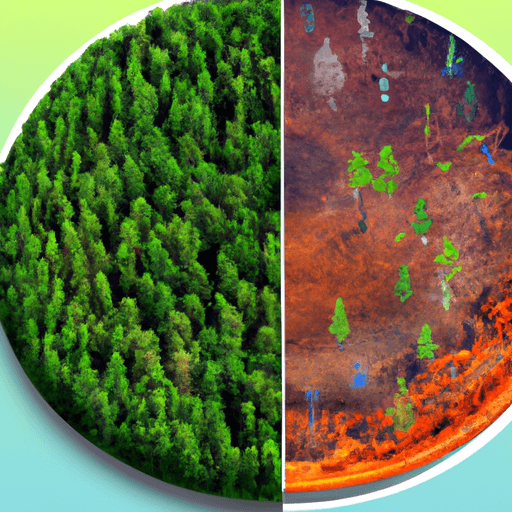The Impact of Climate Change on Global Biodiversity: A Comprehensive Review
In recent years, the effects of climate change on global biodiversity have become an increasingly concerning topic. This article delves into recent scientific discoveries, discussing how climate change impacts the distribution of various species, the relationship between greenhouse gases and biodiversity loss, and the potential future impacts if the current state of climate change persists. Furthermore, it explores possible strategies to negate the detrimental effects of climate change on biodiversity and demonstrates specified effects through real-life case studies from different ecosystems around the world.
The Influence of Climate Change on Species Distribution
Climate change directly influences patterns of species distribution around the world. Studies have shown that, due to alterations in temperatures and precipitation, many species are shifting their ranges poleward or to higher altitudes. A study published in Nature observed how species are moving at an approximate rate of 16.9km per decade towards the poles, with slower shifts noticed in terrestrial species.
Greenhouse Gases and Biodiversity Loss
There is a clear link between the increase in greenhouse gases and the loss of biodiversity. As levels of greenhouse gases rise, so does the planet's temperature, triggering a chain of ecological reactions negatively impacting biodiversity. Rising sea levels, acidic oceans, and increasingly frequent and severe weather events result in habitat loss and shifts in species distribution, pushing many towards extinction. A study published in Science Advances highlights this association, focusing on the impacts of elevated carbon dioxide levels on marine biodiversity.
Future Effects on Biodiversity
Should the current state of climate change continue, the implications for worldwide biodiversity are bleak. If carbon dioxide levels and global temperatures continue to rise at the same rate, we are likely to see an acceleration in the already devastating loss of biodiversity. A report by the Intergovernmental Panel on Climate Change (IPCC) suggests that a 2°C rise in global temperature, which is likely given current trajectories, could lead to the extinction of around 20-30% of all species.
Strategies for Mitigation
Though the outlook seems grim, there are strategies that could mitigate the negative impact of climate change on biodiversity. These range from lessening our carbon dioxide emissions by relying less on fossil fuels, to implementing sustainable land use practices, to restoring ecosystems and building resilience in communities. A comprehensive strategy would involve a mix of these efforts at a global scale.
Featured Case Studies
Situated examples illustrate the impact of climate change on biodiversity. For instance, in the North Atlantic, warming oceans have led to a shift in the distribution of many fish species, impacting local fishing communities and disrupting existing ecosystems. Another example is the dramatic decline of coral reefs, particularly the Great Barrier Reef, which has experienced severe bleaching events due to increased ocean temperatures.
In conclusion, the impact of climate change on biodiversity is pervasive and profound. Without ambitious and diligent efforts to mitigate climate change, the future of global biodiversity is undoubtedly at risk.


















Comments
Leave a Comment